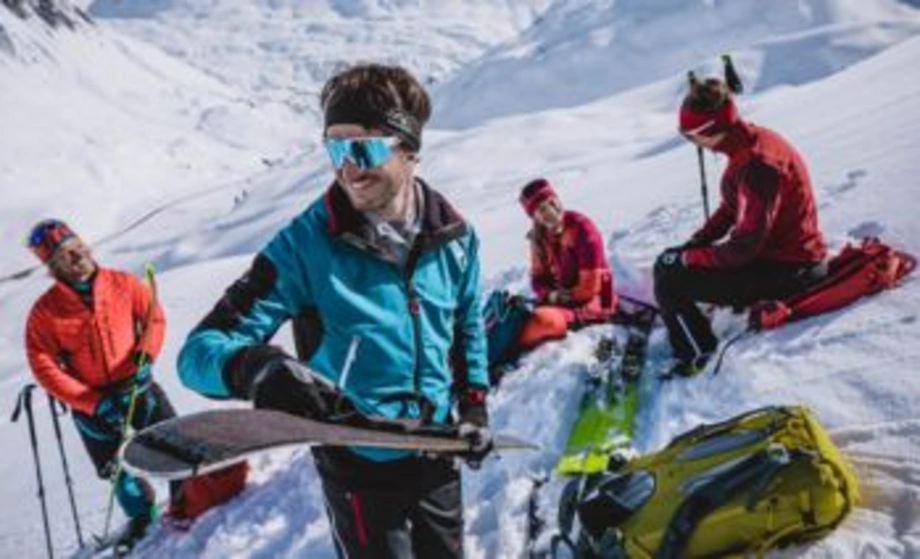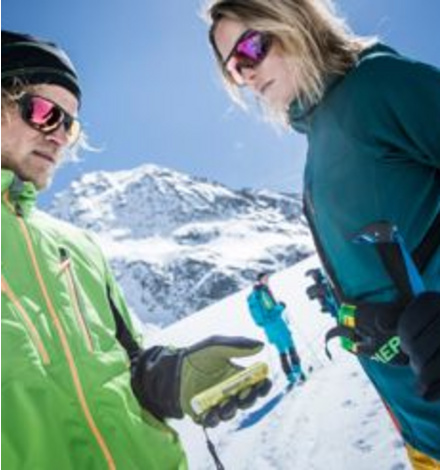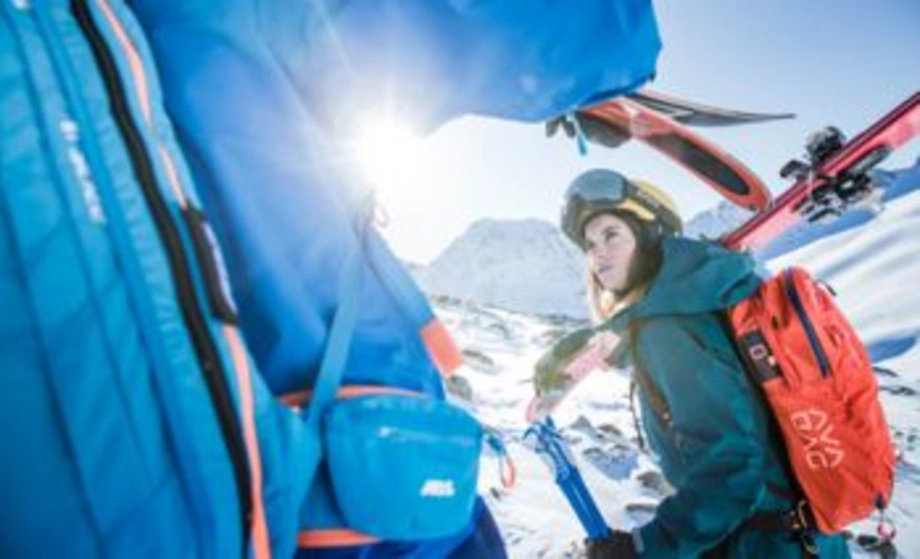Winter is no longer just around the corner – it’s here in full force, meaning that you should be getting your gear ready. In addition to skis, boots and skins, your safety equipment should be just as fundamental. I regularly find myself asking, “Where are the shovel and probe?” or “was the first-aid kit ok last year? What is essential safety gear, what vital equipment should be with you on the mountain and why?

If you are heading off-piste, you should definitely have at least an avalanche transceiver, shovel, probe and first aid kit with you.
Avalanche, shovel and probe
Anyone who moves off-piste (even if it is only a few metres) is moving through potentially dangerous avalanche terrain. Vigilance and caution must be the fundamental rule of the game. You must be aware of avalanche danger and proper risk management. Today there are many ways to get informed, learn and gain experience. The comprehensive offers from alpine clubs are just one example, although there are many other courses. Alternatively, it might also be a good idea to hire a guide responsible for your safety and some local knowledge concerning some leftover pockets of powder.
However, one thing is essential in any case, even for experts, and that is to carry an avalanche beacon (LVS), shovel and probe at all times and in all conditions.
It should be a modern device with three antennas and a marking function for avalanche transceivers. You can find an overview of the current types in our market overview. If you are still using an older device, it is time to think about an upgrade. You should also check the function and the batteries, especially at the beginning of the season. Ideally, go for another round of practice with the avalanche beacon, even if it’s just in your back garden.

The partner check with the avalanche transceiver is important before heading out.

In addition to the equipment, it is especially important that you regularly practice how to use your gear.
Shovels and probes have developed little in recent years. I like to use the Pieps I-Probe; although this is quite expensive and a “normal” probe also works well – it should just be long enough and sturdy. Durable construction is essential where it comes to a shovel – you should also pay attention to the pack size and weight. Here, too, it is necessary to practise probing and digging. Practice makes perfect!
First aid: know-how and equipment
A first aid kit completes my safety equipment. Here, too, one hopes, of course, that one will never have to unpack it in an emergency but be equipped with it in any case. And of course, things like a plaster or a triangular cloth are also used for minor injuries that do not necessarily require treatment by a medical professional.
In addition to the usual contents, especially on ski tours. I always have a few cable ties, extra ski straps, a thin prusik cord, and fabric tape in my waterproof first aid kit. This is, of course, for treating broken skins, ski boot buckles and the like and is not used for open brain surgery!
At the beginning of the season, you should briefly check that the first aid kit is still complete and ready for use (things like sterile packed bandages do have an expiry date) and replace these items if necessary.
I realise I am repeating myself here, but at least as important as carrying a first aid kit is knowledge and experience:
Stay on the ball here and consider taking a first aid course once again if you no longer know what you should, can and are allowed to do first in an emergency or what the stable side position was again. Here, too, there is a wide range of courses, especially for the outdoors, in which you not only learn potentially life-saving measures but also, for example, how to prepare for transport in a helicopter or how to put a triangular sling around an injured arm.
Avalanche-Backpack
Shovel and probe and everything else you need – throw it in your backpack. And what could be more logical than using an avalanche backpack?
There are now a variety of models in all sizes, which are also no longer as heavy and bulky as they were a few years ago. They all have one thing in common, they work well and can reduce the burial depth in an emergency and reduce the probability of a total burial. Since this can significantly reduce the time to rescue, an airbag backpack can save lives. The airbag should be checked at the beginning of the season, following the manufacturer’s instructions. An occasional test release proves the function and helps you get used to the grip of the release lever.

An avalanche backpack can store your gear, but it can also save lives in an emergency.
And what else? Bivy bag, snack etc.
We have now dealt with the duty, but other things can easily be packed and find practical use on the mountain in an emergency.
The first thing to mention here is a bivvy bag. This can not only protect you from wet and cold in an emergency but can also be used to transport injured people. Lightweight models such as the Mountain Equipment Ultralite weigh almost nothing and take up practically no space. At the same time, other models are heavier but more stable. Some also offer additional functions and can be used as a seat cushion, poncho, or emergency tent.
A down jacket is also worth its weight in gold, not only during a cold summit break but also in an emergency. With it, you can keep an injured person at least reasonably warm, especially when mixing and matching it with a bivvy bag.
At this point, my reference to drinks and energy-rich food is almost banal. A warm tea not only lifts your spirits but also provides you with the necessary fluids. And if, for example, due to an emergency, the tour takes much longer than planned, a few bars or gels (I swear by the Shot Bloks from Clif Bar) can supply the body with the necessary energy it dearly needs.
Map, GPS, altimeter
Knowing where you are should be a matter of course on the mountain, but in an emergency, it is paramount. Always pack in a map, compass, GPS, and an altimeter, especially in unfamiliar terrain. You can often find these functions in a mobile phone app, but in this case, you should make sure that the battery lasts long enough, particularly in temperatures well below freezing.
Summary
That’s my brief overview of mountain safety gear and my seasonal preparation. What do you take along with you when you’re chasing the white gold in the backcountry? In the comments, let the Bergzeit team and all readers know – you could save a life!
Otherwise, all that remains is for me to wish you a great and, most importantly, accident-free season. As already mentioned, the best safety material is that which you will never need.